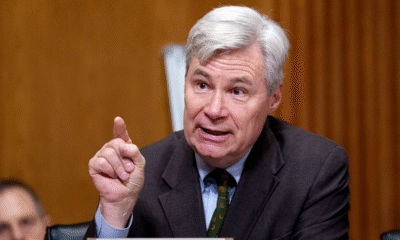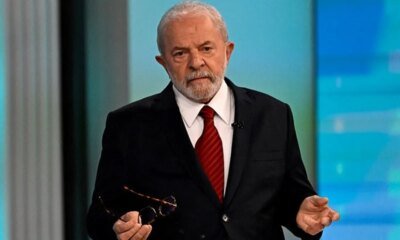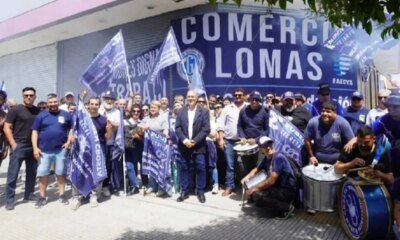INTERNACIONAL
White House rebukes ‘egregious’ court order blocking troop deployments amid Portland unrest
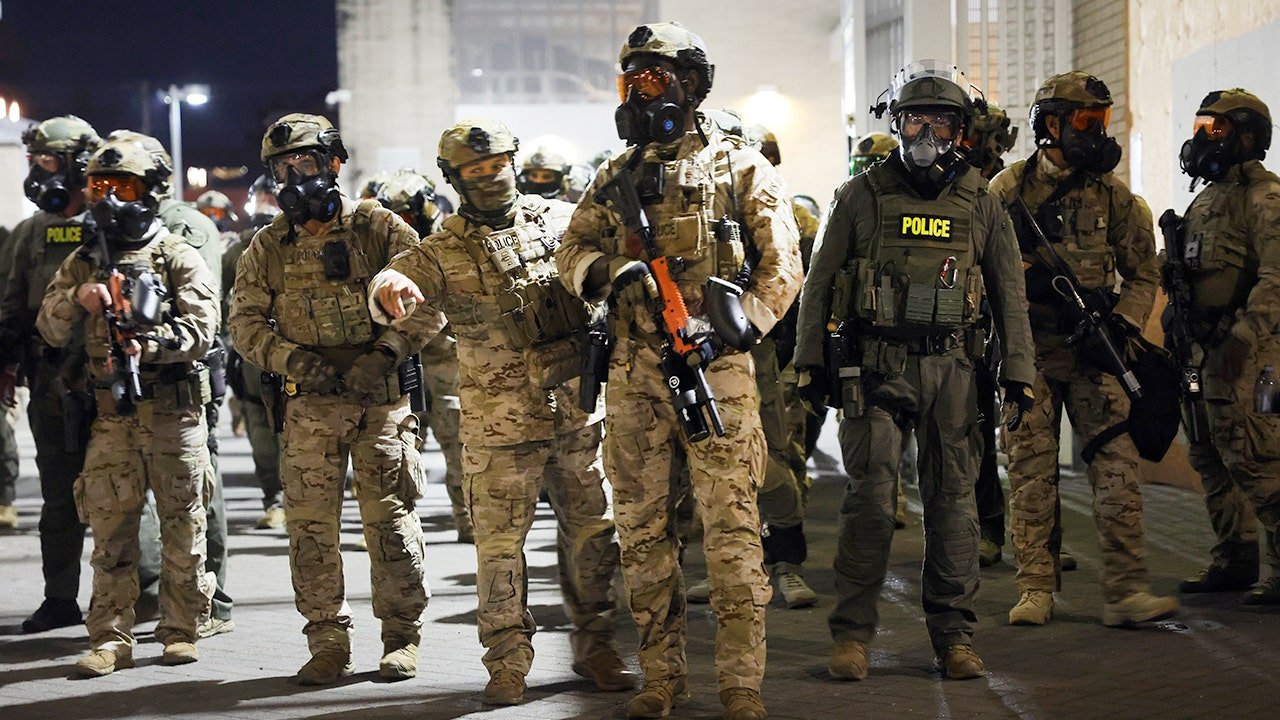
NEWYou can now listen to Fox News articles!
The White House blasted a federal judge who temporarily blocked the Trump administration twice from dispatching National Guard troops to Oregon in October, asserting that President Donald Trump has «undisputed authority» to deploy troops to Portland amid ongoing immigration protests there.
U.S. District Judge Karin Immergut issued a ruling late Sunday blocking the Trump administration from sending California National Guard troops to Oregon — or any other state as Trump advances his quest to deploy troops to major U.S. cities to tackle crime and to keep watch on Immigration and Customs Enforcement (ICE) facilities.
White House press secretary Karoline Leavitt discredited Immergut’s ruling Monday and said that the Trump administration was appealing the decision.
FEDERAL JUDGE BLOCKS TRUMP’S NATIONAL GUARD DEPLOYMENT TO PORTLAND AMID CONSTITUTIONAL CHALLENGE
«I think her opinion is untethered in reality and in the law,» Leavitt told reporters at a White House press briefing. «The president is using his authority as commander in chief, U.S. code 12 406, which clearly states that the president has the right to call up the National Guard and in cases where he deems it’s appropriate. … The ICE facility has been really under siege. And, by these anarchists outside, they have been, disrespecting law enforcement. They’ve been inciting violence.»
Law enforcement officers stand after deploying tear gas outside a U.S. Immigration and Customs Enforcement facility during a protest Oct. 4, 2025, in Portland, Oregon. (Jenny Kane/The Associated Press )
Earlier Monday, White House deputy chief of staff Stephen Miller said that Immergut, a Trump appointee, has no authority to bar the president from sending troops to Oregon, and blasted the decision as one of the most «egregious» orders he’s ever seen.
«A district court judge has no conceivable authority, whatsoever, to restrict the President and Commander-in-Chief from dispatching members of the US military to defend federal lives and property,» Miller said in a Monday X post. «Today’s judicial ruling is one of the most egregious and thunderous violations of constitutional order we have ever seen — and is yet the latest example of unceasing efforts to nullify the 2024 election by fiat.»
«Remember: all of this is about preventing the removal of illegal alien trespassers from the United States at any cost,» Miller said.
The Sunday temporary restraining order came just hours after Trump signed off on mobilizing California National Guard troops to Portland, despite Immergut’s initial restraining order Saturday blocking the deployment of Oregon National Guard troops to the city.
NATIONAL GUARD NOW IN PLACE FOR OREGON AMID ‘CHAOS, DEATH AND DESTRUCTION’: TRUMP
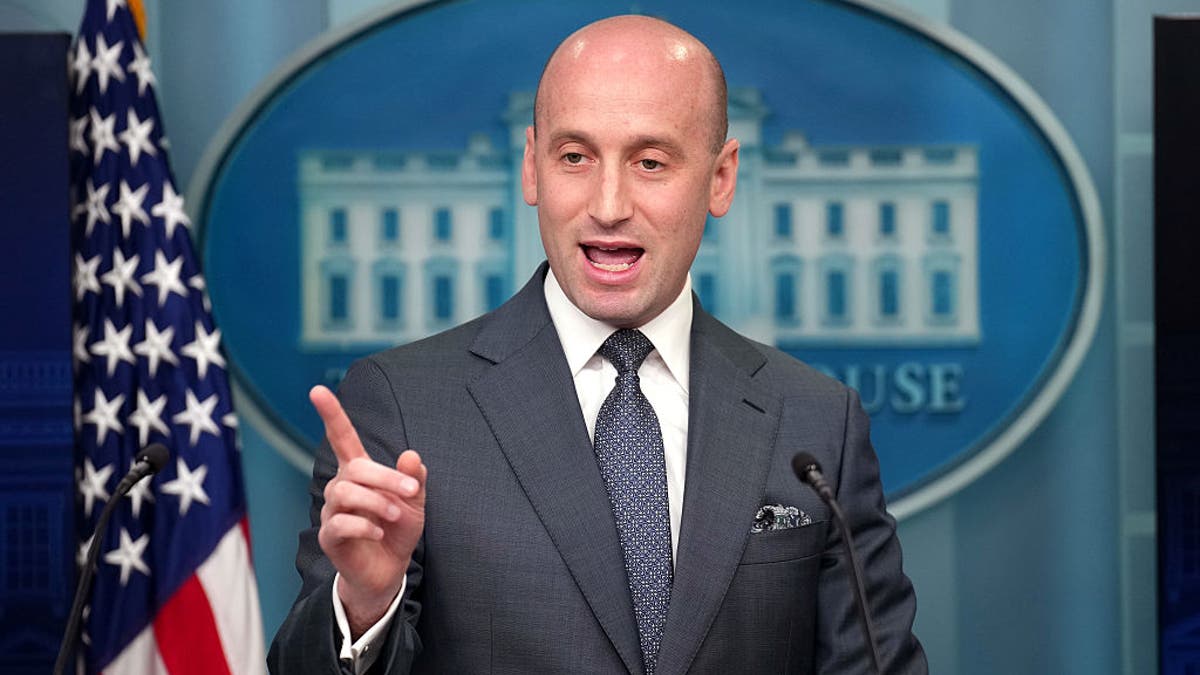
White House deputy chief of staff Stephen Miller blasted the decision as one of the most «egregious» orders he’s ever seen. (Andrew Harnik/Getty Images)
«How could bringing in federalized National Guard from California not be in direct contravention to the temporary restraining order I issued yesterday?» Immergut said during a telephone hearing Sunday.
«Aren’t defendants simply circumventing my order?» Immergut said later. «Why is this appropriate?»
The Trump administration has argued that the deployment of National Guard troops to Portland, Oregon, is necessary to defend ICE officers amid ongoing protests at an ICE facility there.
Miller previously railed against Immergut’s first restraining order barring the Trump administration from sending troops to Portland, Oregon, and said Saturday the deployment is «an absolute necessity to defend our personnel, our laws, our government, public order and the Republic itself.»
Miller’s posts come amid recent scrutiny for denouncing judges. For example, Democratic Rep. Daniel Goldman of New York singled out Miller and the «extreme right» for «threatening judges» who rule against Trump after a fire broke out at a South Carolina Circuit Court judge’s property Saturday.
Trump’s effort to deploy National Guard troops to U.S. cities comes just after he told military leaders in September that they could be tasked with neutralizing the «enemy within» and that Democratic-led cities where he’s sending troops could serve as «training grounds.»
TRUMP VS NEWSOM SHOWDOWN LANDS IN COURT WITH FAMILY TIES TO THE NATION’S HIGHEST BENCH

President Donald Trump speaks to senior military leaders Sept. 30, 2025, in Quantico, Virginia. (Alex Wong/Getty Images)
«We should use some of these dangerous cities as training grounds for our military, National Guard, but military,» Trump said Tuesday to top military leaders in Quantico, Virginia.
The effort is controversial, given that the Posse Comitatus Act of 1878 puts restrictions on deploying U.S. troops to enforce domestic law.
National Guard troops are reserve forces that are mobilized in response to state and federal operations, including natural disasters, and typically are overseen by their respective state governments. However, Trump controversially deployed National Guard troops from states to respond to immigration riots in June, bypassing California Gov. Gavin Newsom to dispatch the troops.
Newsom responded to Immegut’s order late Sunday, and said: «We just won in court — again.»
«Trump’s abuse of power won’t stand,» Newsom said in a post on X.
The Associated Press contributed to this report.
white house,donald trump,immigration,national guard,crime world
INTERNACIONAL
Trump envoy torches Senate Dems’ Kennedy Center probe built on ‘inaccurate gossip’

NEWYou can now listen to Fox News articles!
Kennedy Center President Richard Grenell torched Senate Democrats for opening an investigation into the national cultural center, writing to Rhode Island Democrat Sen. Sheldon Whitehouse that his investigation relied on «inaccurate gossip» and is rife with «partisan attacks.»
«I am concerned about your careless attacks on me and my team,» Grenell wrote in a letter to Whitehouse Thursday. «The letter you signed did not undergo basic fact-checking. It is filled with partisan attacks and false accusations. Your staff relied on anonymous sources, inaccurate gossip, and allegations from partisan reporters who never had access to the data or facts I’m happy to provide below.»
The John F. Kennedy Center for the Performing Arts is located in Washington, D.C., along the Potomac River and serves as the national cultural center of the U.S. It is led by Grenell as its president, with President Donald Trump serving as its chair.
It is a public-private institution, and receives some funding from the federal government.
Whitehouse, the ranking Democrat on the Senate’s Environment and Public Works Committee, announced earlier Thursday that the committee was investigating Grenell’s leadership over the Kennedy Center and its budget while claiming the «nation’s premier arts center is being used as a slush fund and private club for Trump’s friends and political allies,» according to a press release.
ICONIC DC LANDMARK UNVEILS FIRST CHRISTMAS TREE AS PART OF PUSH TO REVIVE HOLIDAY SPIRIT
The John F. Kennedy Center for the Performing Arts is located in Washington, D.C., along the Potomac River. (Craig Hudson for The Washington Post via Getty Images)
«Contracts, invoices, and facility use agreements reveal that you operate the Center for the enrichment of your friends and acquaintances, to dole out political favors, and as a playground for the President of the United States and his allies,» Whitehouse wrote of the investigation.
«The Center is being looted to the tune of millions of dollars in foregone revenue, cancelled programming, unpaid use of its facilities, and wasteful spending on luxury restaurants and hotels—an unprecedented pattern of self-dealing, favoritism, and waste,» he continued in his letter.
Kennedy Center Vice President of Public Relations Roma Daravi told Fox News Digital Friday morning that «Whitehouse’s baseless accusations are just the latest partisan attack on America’s cultural center.»
«With a balanced budget and an astounding $117 million raised under President Trump and Ambassador Grenell’s leadership, the Kennedy Center continues to welcome all Americans to enjoy the arts through commonsense programming,» she added.
KENNEDY CENTER PRESIDENT CRITICIZES JIMMY KIMMEL’S ONE-SIDED LATE-NIGHT PROGRAMMING APPROACH
Grenell hit back at Whitehouse Thursday with a detailed, 12-point letter that walked through the claims Whitehouse put forth alleging the Kennedy Center offered «well-funded political allies like NewsNation and the American Conservative Union Foundation» discounted event rental prices, spent thousands on «luxury hotel rooms, lavish meals, and entertainment for friends and newly hired staff,» and offering the Kennedy Center as a venue for a FIFA event at no charge, which Whitehouse argued was a loss of $5,038,444 in revenue for the center.
«As President of the Kennedy Center, I take financial responsibility extremely seriously,» Grenell wrote. «When I arrived, we were paying a bloated staff with our future debt reserves account. The individual who had the job before me was getting paid $1,210,635 per year. There were 94 people employed in the Development Department (today, there are 16). And the deferred maintenance of the building was quite literally making the building fall apart.»

Kennedy Center President Richard Grenell unleashed on Senate Democrats for allegations over his leadership of the cultural center and a probe of its finances. (Chip Somodevilla/Getty Images)
He added that Whitehouse left out of his investigation announcement any mention that, under Grenell’s leadership, the Kennedy Center’s budget was balanced for «the first time in decades.»
Grenell detailed that he has slashed costs on salaries for executive leadership compared to his predecessors who saw the «hemorrhaging (of) donor dollar,» single board meetings costing $120,000 each, that the Kennedy Center has not canceled any shows as some media outlets have previously reported, while installing a new system to ensure «all events must be revenue neutral.»
As for the FIFA event, Grenell wrote, the massive soccer organization delivered «several million dollars, in addition to paying all of the expenses for this event in lieu of a rental fee.»
«Your focus on simple rental fees is no way to run an institution as diverse as the Kennedy Center. A simple rental fee would not have been enough to cover the magnitude of the event,» he wrote.
KENNEDY CENTER’S PRO-FAITH SHIFT REFLECTS A ‘NEW DAY IN AMERICA,’ CONSERVATIVE LEADERS SAY
The thousands spent on «luxury hotels,» he continued, related to housing new employees at the Watergate Hotel, which is located directly next to the cultural center in D.C., citing the practice is customary while pointing to the center spending $878,000 in 2024 under the Biden administration for Watergate Hotel stays.
Grenell continued that Whitehouse’s criticism of the venue hosting a NewsNation event was by no means one benefiting «political allies,» citing the event featured Democrats and Trump critics Chris Cuomo, Pennsylvania Sen. John Fetterman and sports analyst Stephen A. Smith.
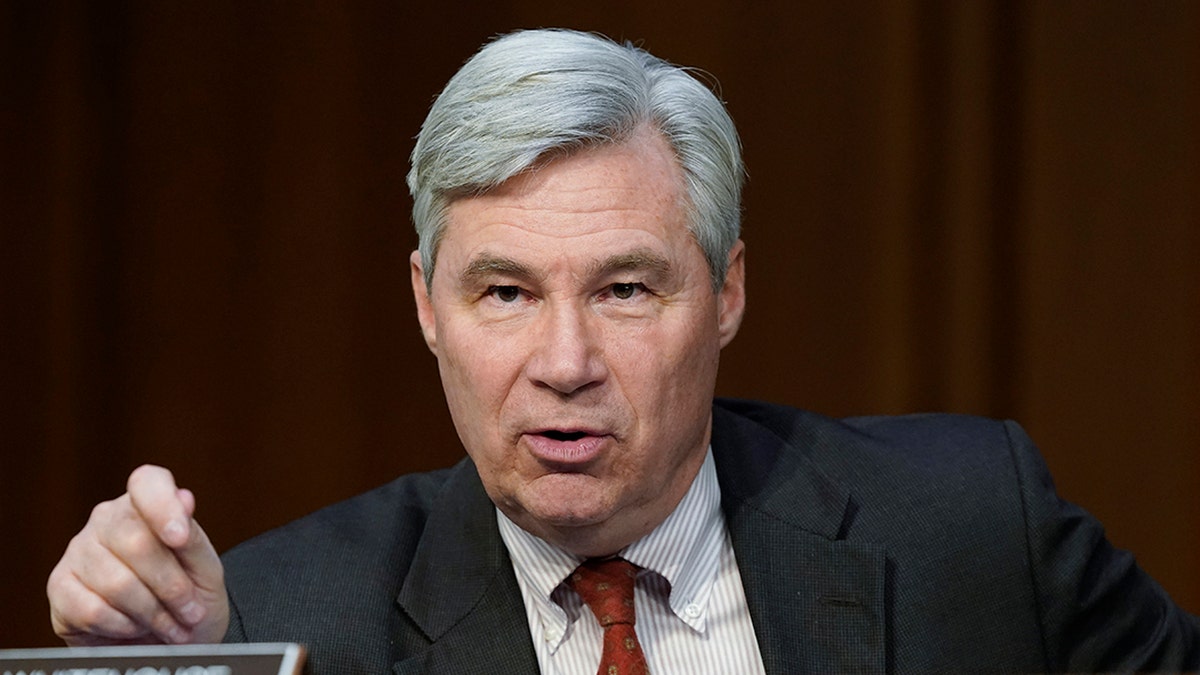
Sen. Sheldon Whitehouse, D-R.I., in a Senate hearing on March 23, 2022. (AP Photo/Alex Brandon) (AP Photo/Alex Brandon)
«No one would describe this as a giveaway to the President’s political allies. This group engaged in bipartisan debate with no restrictions on speech,» he wrote.
Grenell is a longtime Trump ally, serving in the president’s first administration as the nation’s ambassador to Germany and as acting Director of National Intelligence toward the end of Trump’s first tenure. Four years later, Grenell serves as the president of the cultural center and as the special envoy for special missions, a role that focuses on overseeing complex foreign policy challenges.
Grenell told Fox News Digital in February as he took the reins of the center that he would reel in its historic financial losses, including by promoting events that will sell tickets. The Kennedy Center under the Biden administration came under fire from Trump for hosting drag shows targeting kids, with Grenell unveiling more traditional programs, such as recent announcements that the center will hold its first Christmas tree lighting and religious-focused Christmas performances.

President Donald Trump leads a board meeting at the John F. Kennedy Center for the Performing Arts on March 17, 2025 in Washington, D.C. (Chip Somodevilla/Getty Images)
INTO THE ARENA: HOSTILE DEMOCRATS, SKEPTICAL REPUBLICANS TEAR INTO KENNEDY ON THE HILL
«This will be the Golden Age of the Arts,» Grenell told Fox News Digital at the time. «The Kennedy Center has zero cash on hand and zero dollars in reserves – while taking tens of millions of dollars in public funds. We must have programs that sell tickets. We can’t afford to pay for content that doesn’t at least pay for itself right now. I wish we didn’t have to consider the costs of production, but we do.»
Fox News Digital reached out to Whitehouse’s office for comment on Grenell’s response letter but did not immediately receive a reply.
CLICK HERE TO GET THE FOX NEWS APP
Grenell invited Whitehouse to visit the center to «enjoy our new commonsense programming and responsible financial stewardship.»
kennedy center,senate,washington dc,democrats senate,donald trump
INTERNACIONAL
Dónde está el buque Spiridon II con las 2.901 vacas uruguayas varadas en el mar
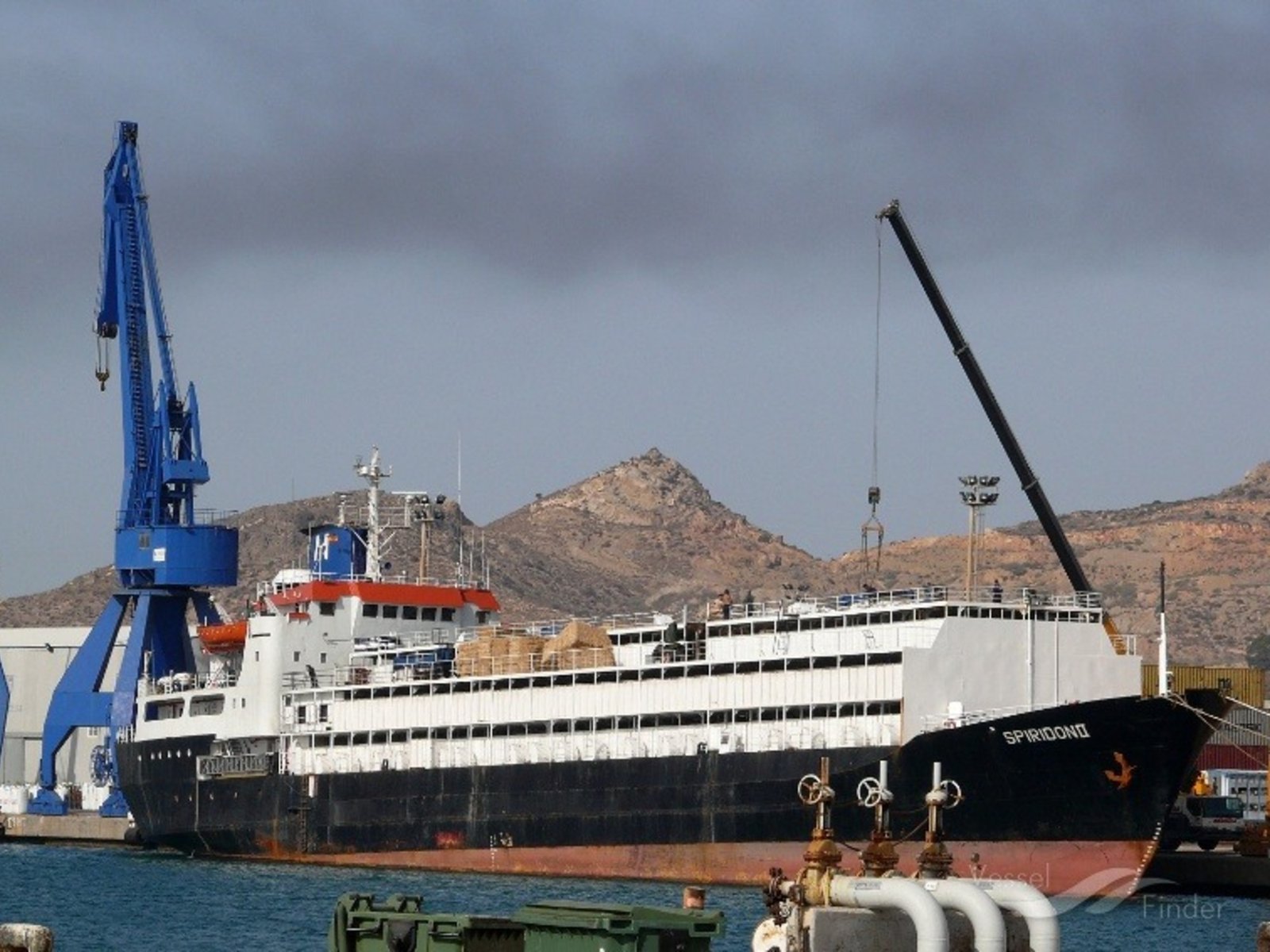
Luego de más de sesenta días de navegación, las 2.901 vacas uruguayas que están a bordo de un buque carguero de bandera togolesa continúan su odisea, luego de que las autoridades de Turquía rechazaran recibirlas. Organizaciones animalistas reclaman una solución pronta dado que además el barco habría apagado su GPS mientras navega por el Mediterráneo: este viernes el Spiridon II se encuentra atracado en una ciudad costera de Libia, en el norte de Asia, y trascendió que podría continuar su rumbo hacia Líbano y no hacia Uruguay, como estaba estipulado. «Están pariendo y muriendo a bordo», se lamentó una activista en redes sociales.
Desde que partió el 19 de septiembre desde Montevideo, el designio del buque carguero Spiridon II no fue auspicioso. El carguero que opera bajo bandera de Togo (África occidental) salió desde la capital uruguaya con 2.901 vacas vivas que una empresa exportadora de ese país acordó enviar hacia Turquía. Poco más de un mes más tarde, el 21 de octubre, hundió anclas en las inmediaciones del puerto de Bandirma, en el Mar de Mármara. Desde entonces, según organizaciones de protección animal y ambientalistas, el buque se transformó en una tumba andante.
Las autoridades turcas, alegando razones sanitarias, rechazaron descargar a los animales, que desde entonces comenzaron a sufrir hacinamiento y escasez de alimento. Algunas vacas han dado a luz y la mayoría de los terneros murieron; también varias de las mismas vacas, debido a las condiciones deplorables. Tras no llegar a un acuerdo con sus contrapartes uruguayas, las autoridades turcas resolvieron el 9 de noviembre que el Spiridon II retornara hacia Montevideo.
Pero desde entonces, más bien, boya por el Mediterráneo. Las posibilidades de supervivencia de los animales durante el eventual trayecto de vuelta hacia Uruguay son muy bajas, y por eso el enérgico reclamo de las organizaciones protectoras.
Pero también hay premura para encontrar una solución para los intereses detrás del negocio de exportación de animales en pie que supuso el frustrado negocio: este lunes trascendió que las autoridades de Turquía ofrecieron mercados alternativos para ubicar a los bovinos. Mientras, activistas denunciaron este martes que el Spiridon II habría apagado su GPS y que se había perdido el rastro del barco y los animales a bordo.
Sin embargo, este viernes y según puede cerciorarse en medios especializados en tráfico marítimo, como MarineTraffic, el Spiridon II se encuentra atracado en el puerto de Bengasi, en las costas mediterráneas de Libia, en el norte de África.
Según activistas como Rita Rodríguez González, del Instituto Nacional de Bienestar Animal (INBA) de Uruguay, la tripulación del buque de bandera togolesa aguarda en Bengasi autorización de las autoridades de otro país, de Líbano, para poder continuar su rumbo hacia una solución definitiva. Sin embargo, para esta activista puede ser definitiva pero no la mejor.
«Algunas vacas están pariendo a bordo y muchas muriendo en esas condiciones. Nadie se hace cargo: el Estado uruguayo está totalmente ausente y se lava las manos diciendo que es un problema entre privados», comenzó su descargo Rodríguez González este viernes por la tarde. Su testimonio llama la atención por, al menos, dos cuestiones: por ser ella parte de un organismo gubernamental; y porque cuyas afirmaciones contrastan los dichos de Marcelo Rodríguez, el director de Servicios Ganaderos del Ministerio de Ganadería, Agricultura y Pesca (MGAP), otro organismo gubernamental, quien aseguró el lunes que su área buscaba alternativas.
Pero la activista Rodríguez González dio detalles de por qué el destino de Líbano para las vacas no sería propicio: «Nos informaron que estaban viendo si podían en algún otro puerto, porque las posibilidades de que las vacas lleguen vivas a Montevideo son mínimas y menos sin un veterinario a bordo, y nos acabamos de enterar de que el barco buscaría atracar en un puerto de Líbano».
«Esto es el peor de los escenarios posibles: en 2020, Animals Australia dio a conocer la campaña en contra de ‘los barcos de la muerte’ y cómo eran asesinadas antes de entrar a Líbano. No les puedo describir ni siquiera esas imágenes, porque sería terrible mostrarlas, pero también terrible es que suceda. Y después de todo lo que pasaron estas vacas, destinarlas a una muerte así es de las cosas más crueles que podríamos hacer. Y estamos buscando cómo hacer para que esto no se dé», explicó la integrante del INBA de Uruguay.
Ahora, entonces, comienza otra nueva batalla: que las vacas no vayan a Líbano.
INTERNACIONAL
Un terremoto en el centro de Bangladesh dejó al menos nueve muertos y más de 300 heridos

Un terremoto de magnitud 5,5 sacudió el centro de Bangladesh el viernes a las 10:38 de la mañana, cobrando al menos nueve vidas y dejando más de 300 heridos, de acuerdo con autoridades gubernamentales y varios medios locales. El epicentro se localizó en Ghorashal, dentro del distrito de Narsingdi, aproximadamente a 25 kilómetros de Daca, la capital del país, y a una profundidad de 10 kilómetros, según datos del Servicio Geológico de Estados Unidos (USGS).
El sismo, que según el Departamento Meteorológico de Bangladesh tuvo una duración de 26 segundos y fue registrado con una magnitud de 5,7, desencadenó escenas de pánico en la capital, donde los edificios temblaron y miles de habitantes abandonaron apresuradamente sus viviendas y oficinas.
De acuerdo con reportes de la televisora DBC y el diario Prothom Alo, entre las víctimas mortales se encontraban al menos dos niños. Las muertes se produjeron principalmente debido a la caída de techos y muros, además del colapso de barandillas en un edificio del área de Armanitola, en la parte antigua de Daca, que mató a tres personas que compraban en una carnicería. Estas personas fueron trasladadas a un hospital cercano, donde se confirmó su fallecimiento. El diario Prothom Alo también señaló que alrededor de 252 empleados de la industria de la confección resultaron heridos durante estampidas mientras intentaban evacuar rápidamente sus lugares de trabajo en el distrito de Gazipur, adyacente a Daca, donde se concentran numerosas fábricas y centros industriales.
Familiares y testigos presenciaron escenas de angustia mientras las víctimas eran llevadas a centros médicos, como el Hospital Universitario de Daca, y estudiantes universitarios saltaron desde pisos altos de residencias estudiantiles durante el temblor, reportaron canales de televisión locales. AFP informó que en Daca fue visible el llanto y el miedo de los pobladores en la calle, tras verse sorprendidos por el desastre en el día de descanso nacional.
El Departamento de Bomberos y Defensa Civil movilizó equipos a edificios que presentaban inclinaciones preocupantes y atendió un incendio originado en una estación de energía en el barrio de Baridhara. Además, el gobierno interino declaró que al menos 14 edificios resultaron dañados, según la oficina del líder interino Muhammad Yunus, quien expresó su “profunda conmoción y tristeza por las víctimas reportadas en diferentes distritos” y aseguró que “se están tomando todas las medidas necesarias”.
El impacto del terremoto se sintió incluso en la ciudad india de Calcuta, a más de 325 kilómetros del epicentro, donde habitantes salieron a las calles en busca de resguardo, según testigos entrevistados por AFP. Hasta el momento, no se reportaron daños significativos ni víctimas en India.
El USGS precisó que el norte y sureste de Bangladesh son zonas sísmicamente activas por la interacción de las placas de India y Eurasia, pero la región central, donde ocurrió el sismo reciente, es menos propensa a este tipo de eventos. Históricamente, desde 1950 solo se han registrado 14 movimientos telúricos de magnitud similar en un radio de 250 kilómetros del epicentro.
Según expertos citados por AFP y medios locales, Bangladesh, con una población de 170 millones de habitantes, no está suficientemente preparada para enfrentar terremotos de mayor magnitud, situación que pone en alto riesgo a Daca, con cerca de 2,1 millones de edificaciones.
Las autoridades continúan evaluando los daños e instan a los distintos organismos públicos a permanecer atentos ante posibles réplicas y nuevas emergencias.
(Con información de AP y AFP)
Accidents,Disasters,Natural Catastrophes,Asia / Pacific,Disasters / Accidents

 POLITICA2 días ago
POLITICA2 días agoLa Justicia limitó las visitas a Cristina Kirchner en su prisión domiciliaria

 ECONOMIA3 días ago
ECONOMIA3 días agoFrávega cierra sucursales y empleados temen por despidos masivos

 POLITICA2 días ago
POLITICA2 días agoMilei prometió acelerar las reformas, pero advirtió sobre la reactivación económica: «La mejora en el bolsillo va a ser paulatina»



